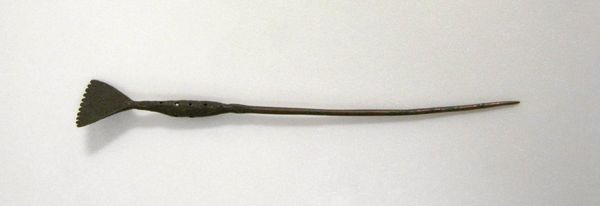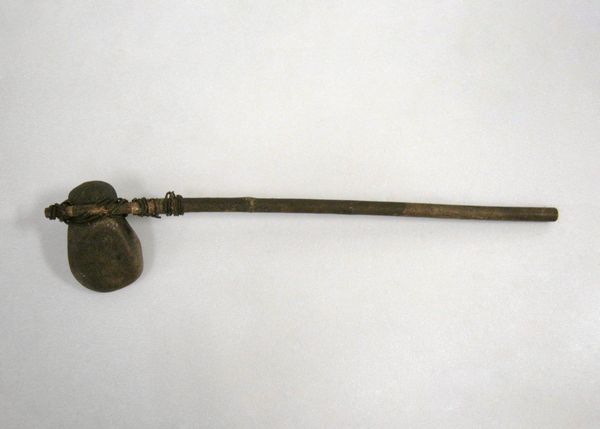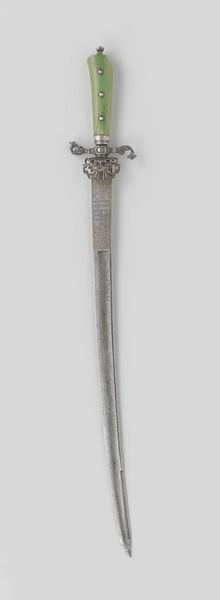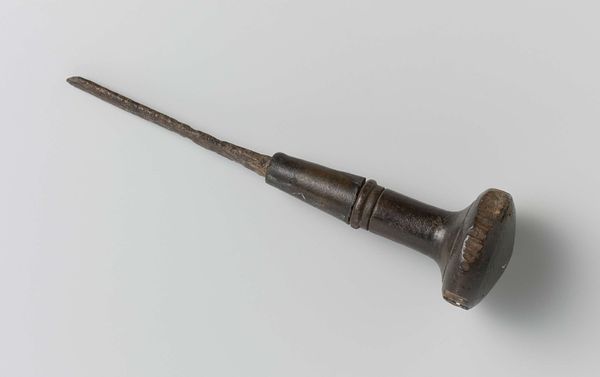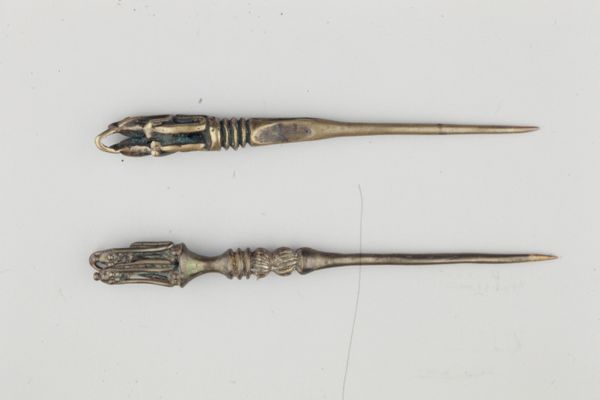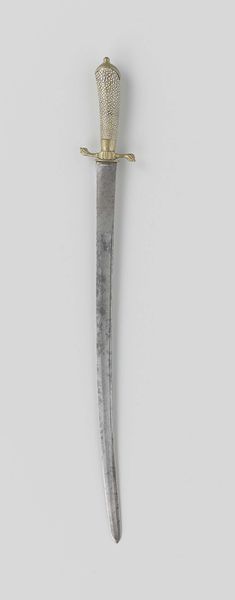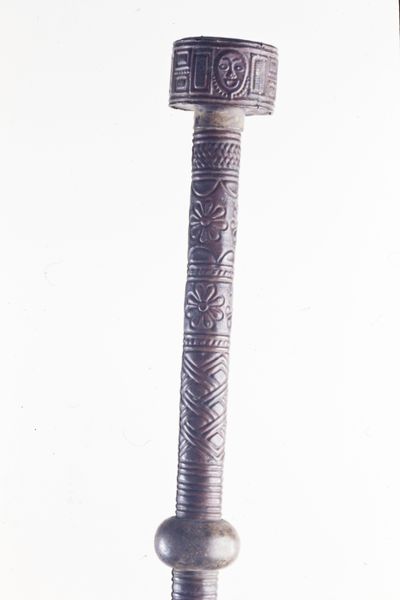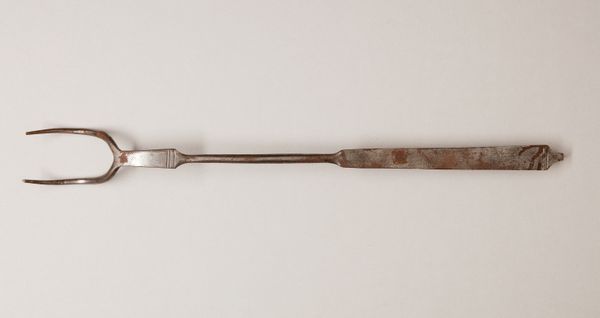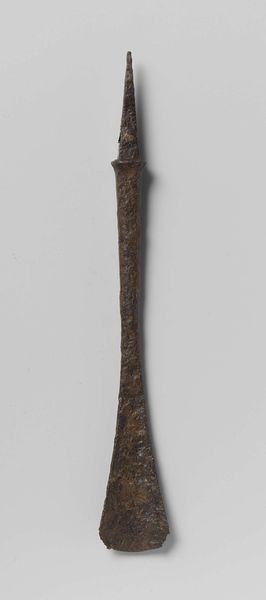
metal, sculpture
#
metal
#
sculpture
#
sculpture
Dimensions: 5 15/16 x 1 1/8 in. (15.1 x 2.86 cm)
Copyright: Public Domain
Editor: Here we have a Mangbetu hairpin, believed to be from the 20th century, crafted from carved brass and other metals. The craftsmanship is evident, even in a utilitarian object like this. What historical context can you provide that shapes our understanding of this piece? Curator: Well, think about the power of adornment. In many cultures, hairstyles signify status and identity. Among the Mangbetu people of the Congo, elongated heads were a sign of beauty and aristocracy achieved through childhood head-binding. Therefore, hairpins weren't just functional; they visually reinforced the aesthetic and social hierarchy. Editor: So, this simple object becomes a statement? Curator: Precisely! This hairpin isn’t merely decorative; it's a potent symbol of Mangbetu identity and a deliberate manipulation of the body to adhere to and project power within their societal norms. How do you think its display in a Western museum influences its meaning now? Editor: That's interesting. Seeing it here, divorced from its original context, it runs the risk of being viewed as a purely aesthetic object. It needs careful framing to avoid cultural appropriation. Curator: Exactly. And it highlights the museum's responsibility to interpret its collection ethically, acknowledging the historical power dynamics inherent in the act of collecting and displaying objects from other cultures. By showcasing this hairpin, are we celebrating ingenuity, or perpetuating colonial narratives? Editor: I see your point. By understanding its place within Mangbetu society and how it reflects their ideals of beauty and status, we can have a more informed and respectful understanding. Curator: Precisely. Thinking about art within a social, political context truly enriches our understanding of it, and our responsibilities when presenting it to the public.
Comments
No comments
Be the first to comment and join the conversation on the ultimate creative platform.

